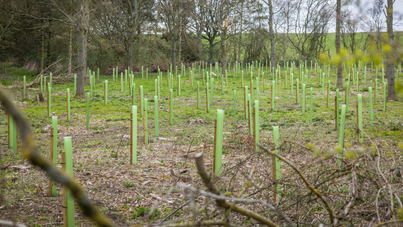Authors
English law has never before provided a stand-alone and straightforward means of binding landowners to maintain their land in a particular way. The Environment Act 2021 has changed this position through the introduction of conservation covenants.
What are conservation covenants?
The Environment Act 2021 introduces a new statutory scheme to enable landowners to enter into private agreements (conservation covenant agreements) with responsible bodies, to do or refrain from doing something on their land, for a conservation purpose, for the public good (conservation covenants). Such covenants may provide for:
- conserving the natural environment or the natural resources of land,
- conserving land as a place of archaeological, architectural, artistic, cultural or historic interest, or
- conserving the setting of land with a natural environment or natural resources or which is a place of archaeological, architectural, artistic, cultural or historic interest.
Conservation covenants can remain in place and bind subsequent owners of the land to the terms of the covenant, even though they did not enter into the original agreement. The resulting public benefit is that the conservation value, generated through the covenant, can be preserved for future generations. Without this legal protection in place, the land could be used for other purposes, which may undermine or destroy those benefits.
This concept is broader than the use of conservation covenants purely for the purposes of Biodiversity Net Gain (BNG) requirements.
When will conservation covenants become available?
The relevant part of the Environment Act 2021 comes into force on 30 September 2022. Theoretically from that date, conservation covenant agreements may be made, but we are yet to see further details regarding the registration of responsible bodies (i.e. the essential counterparty). These provisions may take time to bed in once the connected legislative arrangements fall into place.
How will conservation covenants work?
The following notes summarise the way conservation covenants will work:
Parties to the agreement
(1) Landowner / covenantor (person with a freehold estate or leasehold estate of more than seven years).
(2) Responsible body / covenantee (the Secretary of State or bodies designated by the Secretary of State upon application by the body – local authorities, other public bodies or charities with mainly conservation related functions or purposes, other bodies if at least some their main activities relate to conservation. E.g. in a recent blog, Natural England confirmed its intention to apply to become a responsible body.)
Can be replaced if needed.
For more details regarding Responsible Bodies see
“Conservation covenants: What is a Responsible Body?”
Duration of obligation under the covenant
Freeholders – in perpetuity (i.e. an indefinite period) or a shorter period specified in the agreement;
Leaseholders – cannot exceed the remainder of the lease term but the parties can specify a shorter period.
If used in the context of BNG delivery, Schedule 7A of the Town & Country Planning Act 1990 requires a minimum 30-year term.
Legal status
Private, voluntary legal agreement; executed by deed.
Registerable as a local land charge
Successors
Subject to certain exceptions, conservation covenant binds successor of the landowner, who has a “qualifying estate”.
Once landowner has ceased to be owner of a qualifying estate in the land, they will cease to be bound by the covenant.
Scope of conservation covenant obligations
Obligations can be positive (requiring the party to do something) or restrictive (requiring the party to refrain from doing something).
Landowner obligations will bind successors in title. Responsible body obligations are also owed to successors.
Breach (of contract)
Doing something prohibited or permitting or suffering another person to do so;
Failing to perform positive obligation.
Defences
If breach was:
- due to matter beyond defendant’s control;
- emergency inaction/action to prevent loss of life or injury to any person;
- necessary to ensure compliance with statutory controls, applicable as result of a subsequent statutory designation of covenant land for a public purpose
Enforcement – remedies
Specific performance, injunction, damages, order for payment due under the obligation
Discharge/modification of obligations
By agreement, or by application to the Upper Tribunal
For more information, please contact Josie Edwards.
Print article



